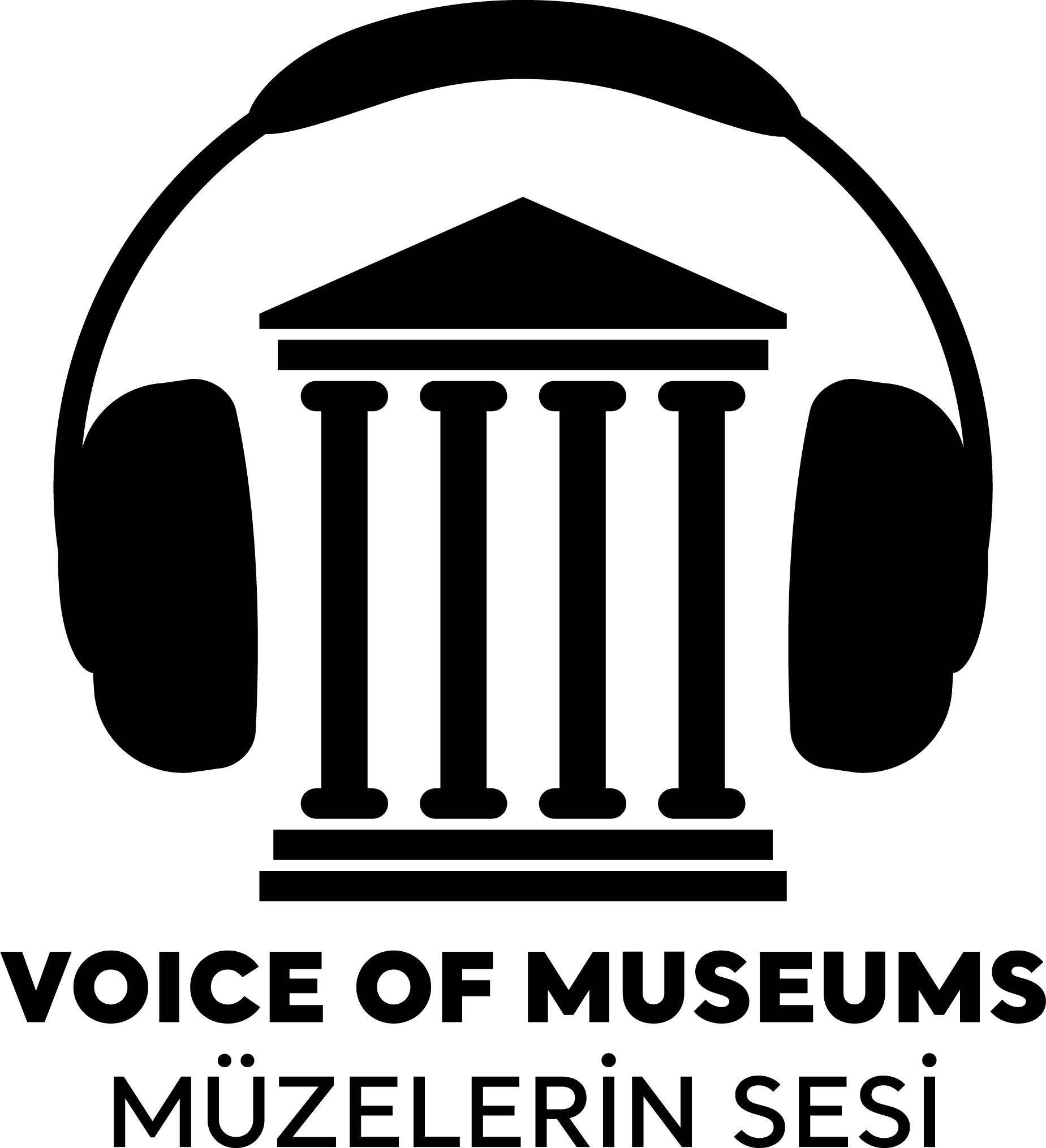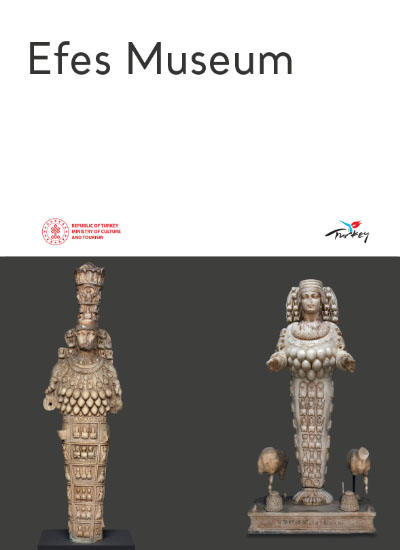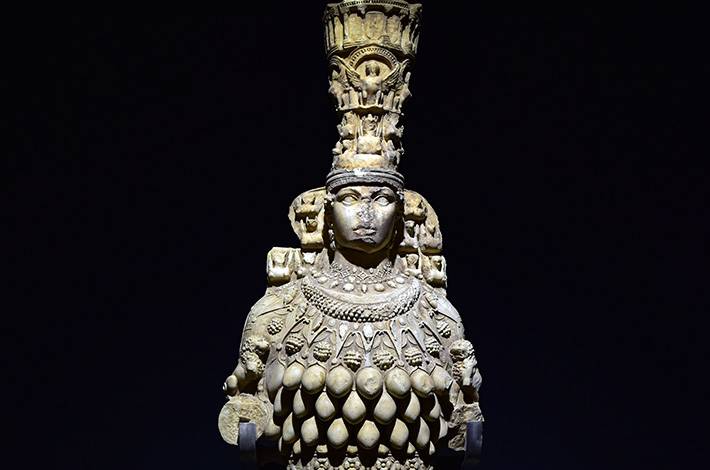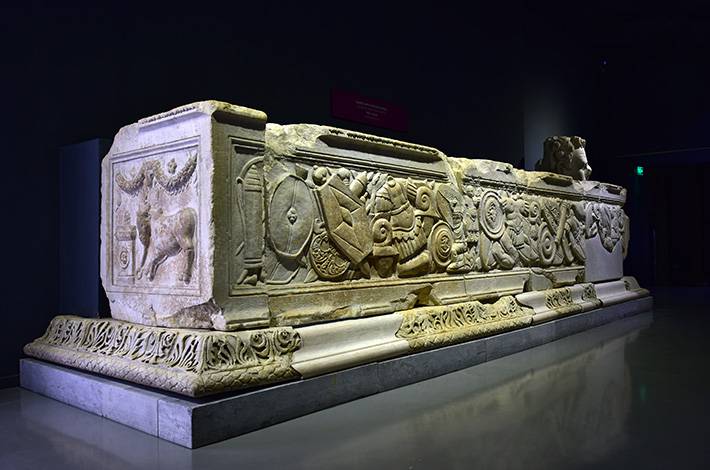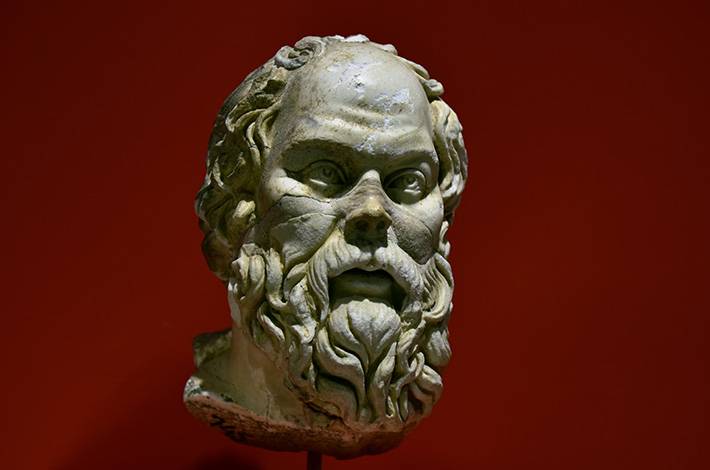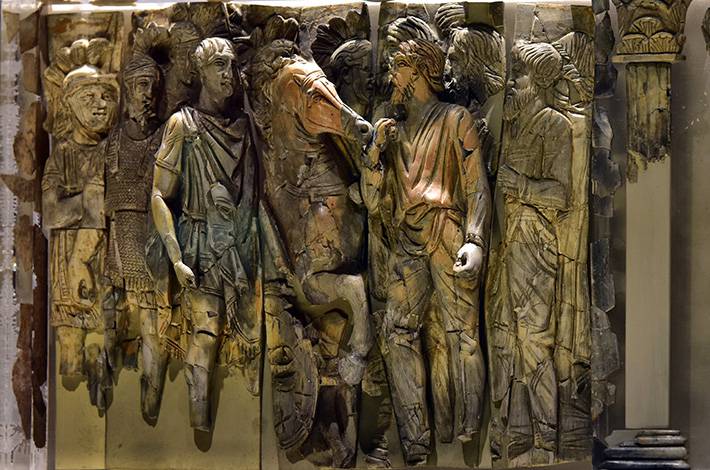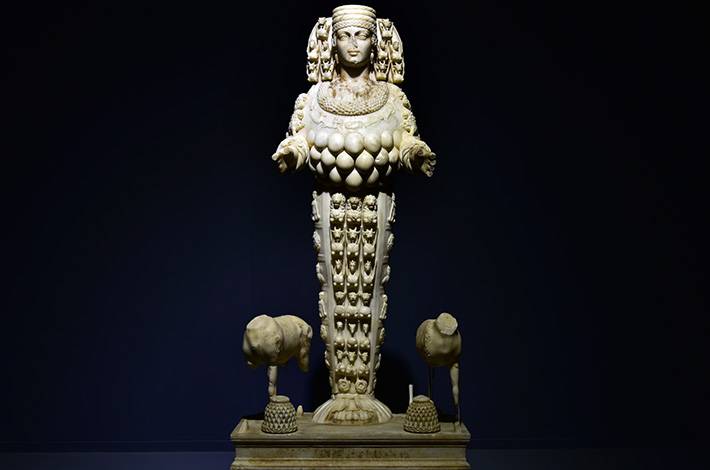8500-Year Journey The museum is organized by subject and finding groups, including the Information Hall at the entrance, the Hall of Fountain Findings, the Hall of Terrace Houses Findings, Ancient Coins, Ephesus Through the Ages, Inner Garden, Cybele Cult, Hall of Artemis Temple Findings, Ephesus Artemis and Imperial Cult Artefacts unearthed from Çukuriçi Mound, the Temple of Artemis (Artemision), the St Jean Church, the fortress on Ayasuluk Hill, the Belevi Mausoleum, and Ephesus. Resting Warrior During the excavations at the Polio Fountain, a young warrior was discovered depicted in a half-lying position. The statue's body weight is supported by the left arm, which is leaning on a rock. The warrior has wavy hair attached with a band over the forehead and a calm expression on his face. He is holding a shield in his arm and a sword in his hand. While the left leg is extended backwards from the knee, the right leg is bent from the knee and extended forward. Marcus Aurelius The white marble statue of Marcus Aurelius, a Roman Emperor and Stoic philosopher, exhibits fine craftsmanship. The emperor's forehead wrinkles are prominent, and he wears a paludamentum attached to his right shoulder with a fibula. The artifact's back is left raw. It dates back to the 2nd century AD during the Roman Period. Head of Eros The white marble sculpture of the Head of Eros exhibits fine craftsmanship, but unfortunately, it is broken at the neck. Eros is depicted with a slight inclination to the right, gazing towards the bow he holds. The sculpture portrays an innocent and childlike expression on the face, with curled hair tied back in the middle. This sculpture is a replica of Lysippos' 'Eros stretching the bow,' created between 330-320 BC. Artemis Artemis displays features that are integrated with Kybele, the mother goddess of Anatolia since prehistoric times. The high polos on her head is in the form of a temple and has three floors. She wears earrings on her ears, a pearl necklace around her neck, and under her chest, four rows of globules related to fruitfulness and fertility can be seen. Artemis has a four-piece rosette and a thin belt adorned with bee motifs, which is the symbol of Ephesus, around her waist. Figures such as lions, rams, deer, gryphons, and bees are placed in each rectangle.
EPHESUS MUSEUM
